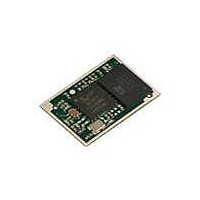DVK-BTM411 Laird Technologies, DVK-BTM411 Datasheet - Page 55

DVK-BTM411
Manufacturer Part Number
DVK-BTM411
Description
BLUETOOTH EVAL BOARD BTM411
Manufacturer
Laird Technologies
Type
Transceiverr
Specifications of DVK-BTM411
Frequency
2.4GHz
Wireless Frequency
2.402 GHz to 2.48 GHz
Interface Type
UART
Data Rate
2.1 Mbps
Operating Voltage
3 V to 3.3 V
Antenna
Multilayer Ceramic Integrated
Operating Temperature Range
- 30 C to + 70 C
Output Power
4 dBm
Technology/ Type
Development Kit
For Use With/related Products
BTM411
Lead Free Status / RoHS Status
Lead free / RoHS Compliant
Lead Free Status / RoHS Status
Lead free / RoHS Compliant, Lead free / RoHS Compliant
Other names
DVK-BTM411
Available stocks
Company
Part Number
Manufacturer
Quantity
Price
Company:
Part Number:
DVK-BTM411-02
Manufacturer:
LAIRD
Quantity:
2
BTM410/411
Bluetooth
FCC REgULATORY
STATEMENTS
55
®
AT Data Module
BTM410 FCC and Industry Canada Statements
The Final Equipment user manual must show the following statements:
This device complies with part 15 of the FCC Rules. Operation is subject to the following two conditions: (1) This device
may not cause harmful interference, and (2) this device must accept any interference received, including interference
that may cause undesired operation.
Changes or modifications not expressly approved by the party responsible for compliance could void the user’s
authority to operate the equipment.
To comply with the FCC RF exposure compliance requirements, this device and its antenna must not be co-located
or operating to conjunction with any other antenna or transmitter.
Considerations for OEM integration:
This module has a limited modular approval. Approval with any other antenna configuration or layout other than that
approved will necessitate additional radiated emission testing to be performed.
To inherit the modular approval, the antennas for this transmitter must be installed to provide a separation distance
of at least 20 cm from all persons and must not be co-located or operating in conjunction with any other antenna or
transmitter.
This module was approved with the following antenna:
Operation of this module with any other antenna will require additional testing to be performed.
Co-location with other radio transmitting devices operating concurrently in the same band will require additional
testing and certification.
Designers should note the distinction that the FCC makes regarding portable and mobile devices. Mobile devices are
defined as products that are not used closer than 20cm to the human body, whereas portable devices can be used
closer that 20cm to the body. In the case where the BTM410 module is used in a portable device, additional SAR
testing must be performed on the complete product.
FCC Labelling requirement
If the FCC ID is not visible when the module is installed inside another device, then the outside of the device into which
the module is installed must also display a label referring to the enclosed module. This exterior label can use wording
such as the following: “Contains Transmitter Module FCC ID: PI4410B” or “Contains FCC ID: PI4410B.” Any similar
wording that expresses the same meaning may be used.
BTM411 FCC and Industry Canada Statements
The user manual must show the following statements:
This device complies with part 15 of the FCC Rules. Operation is subject to the following two conditions: (1) This device
may not cause harmful interference, and (2) this device must accept any interference received, including interference
that may cause undesired operation.
Changes or modifications not expressly approved by the party responsible for compliance could void the user’s
authority to operate the equipment.
To comply with the FCC RF exposure compliance requirements, this device and its antenna must not be co-located
or operating to conjunction with any other antenna or transmitter.
Considerations for OEM integration:
To inherit the modular approval, the antennas for this transmitter must be installed to provide a separation distance
of at least 20 cm from all persons and must not be co-located or operating in conjunction with any other antenna or
transmitter.
Co-location with other radio transmitting devices operating concurrently in the same band will require additional
testing and certification.
Designers should note the distinction that the FCC makes regarding portable and mobile devices. Mobile devices are
defined as products that are not used closer than 20cm to the human body, whereas portable devices can be used
closer that 20cm to the body. In the case where the BTM411 module is used in a portable device, additional SAR
testing must be performed on the complete product.
FCC Labelling requirement
If the FCC ID is not visible when the module is installed inside another device, then the outside of the device into which
the module is installed must also display a label referring to the enclosed module. This exterior label can use wording
such as the following: “Contains Transmitter Module FCC ID: PI4411B” or “Contains FCC ID: PI4411B.” Any similar
wording that expresses the same meaning may be used.
RF Solutions: ANT-24G-WHJ-SMA 0dBi




















